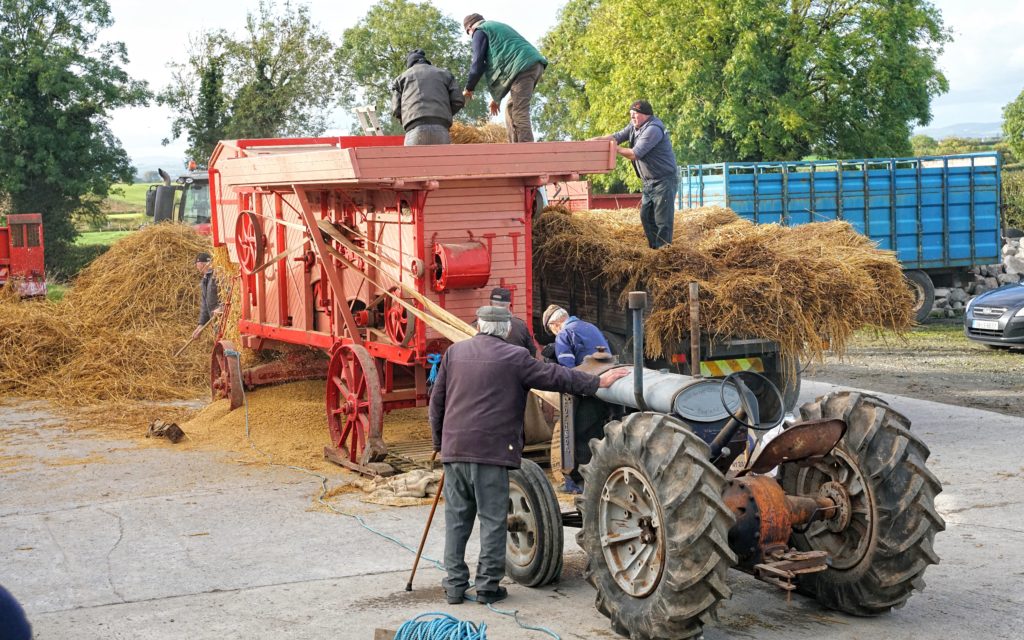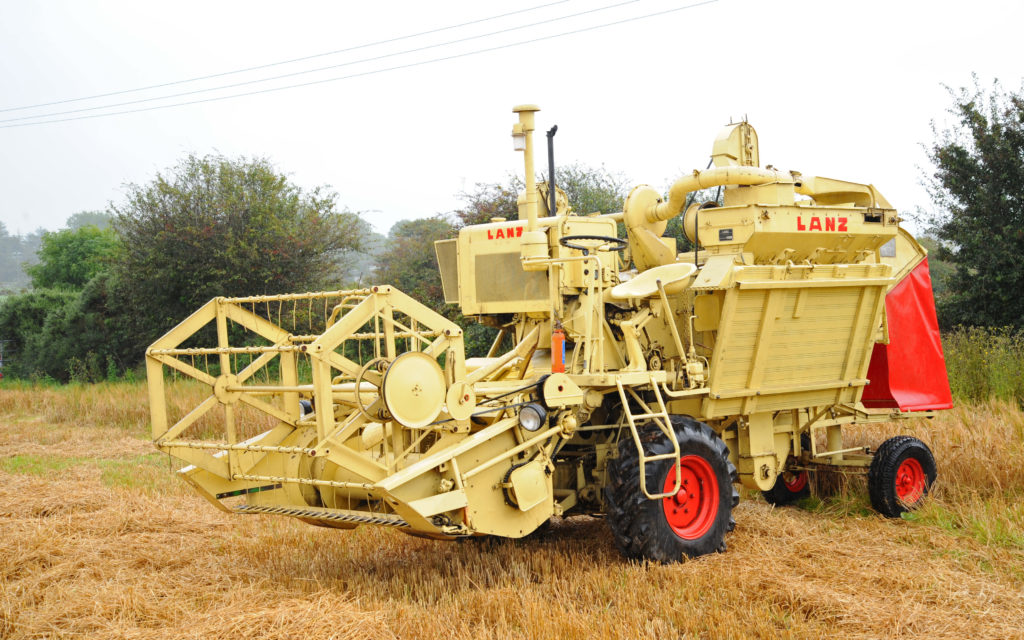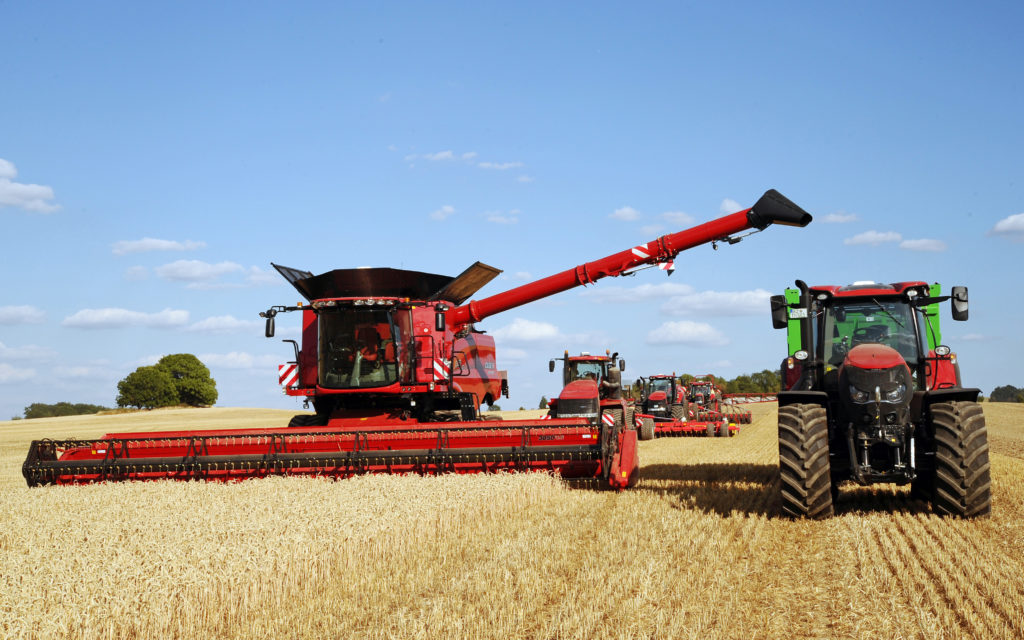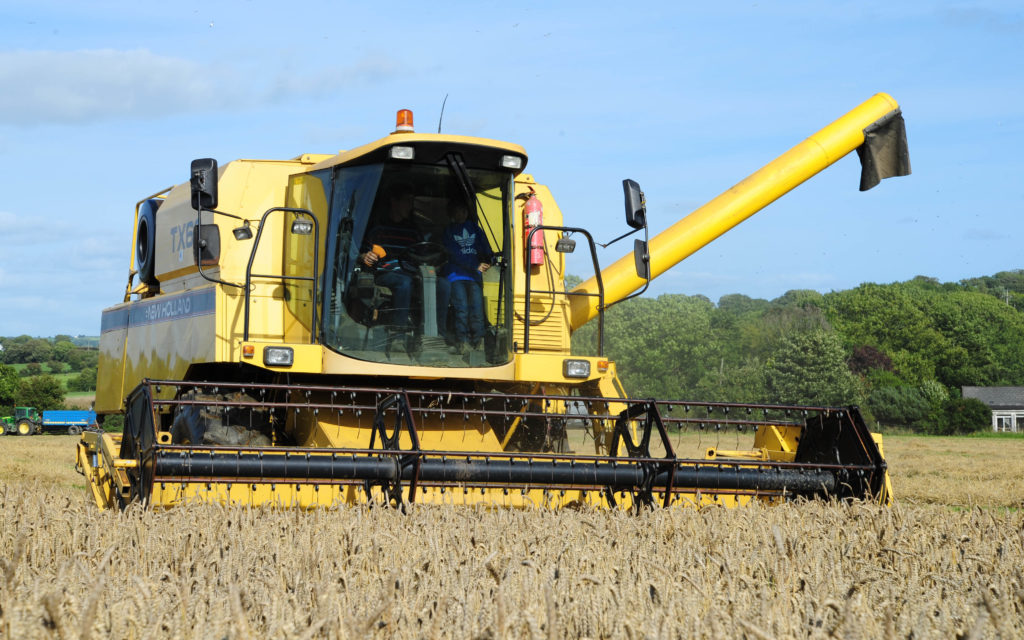In the beginning it was all so simple, combine harvesters were basically a thresher sent out into the field with a reaper attached to either the side, or the front, to cut the crop and leave the grain neatly bagged in rows.
Today, we have progressed to a myriad of hybrid machines with various arrangements of drums and rotors designed to separate every last grain from the straw and remove every last straw from the grain.
Original concept remains
Despite the top-end models having such complex processing systems, the ghost of the original stationary thresher can still be seen in the more basic models offered by all manufacturers.

This consists of a rapidly spinning drum with rasp bars attached that act to mimic the ancient craft of beating the cut crop with sticks and straps to break the seed from the stalk.
The resulting mix would then require the sorting of the seed from the stalks, both by sieves and winnowing, two operations that are still carried out today in all combine harvesters, and that much has not really changed over the years.
Secondary separation
The separated seed would exit the drum either through a concave sieve which the rasp bars had rubbed the crop against, or still contained within the flow of straw as it exited the drum.

Both streams require further separation, the grain rich portion being carried to the sieves and winnowing section, while the straw was shaken about in the hope that the remaining grains would drop out, this was the task of the straw walkers.
What has occupied the minds of the engineers and entrepreneurs over the years is increasing the speed and efficiency of the primary separation process with all the other process centred around this operation.
First combine to break the mould
The first major attempt to reorganise and streamline the whole affair was made by New Holland in the mid 1970s when it introduced the twin rotary separator mechanism.
In essence, these threshed the crop by passing it along the longitudinal axis of two drums rather than at right angles to a single, or sequence of drums.
This was closely followed by the Axial Flow combines from International Harvester which had a single longitudinal rotor, an arrangement it has stuck to ever since, while other manufacturers have favoured New Holland’s approach.
Appreciating the advantage
It took several years for these ideas to gain acceptance and even as late as 1981, Claude Culpin, author of the standard primer on farm machinery during that period, only suggested that “this type of development will have far reaching effects on design”.

Although a little hesitant in coming to the party, he was far from wrong. One of the great benefits he noted was that “control of the major factors appears capable of full automation”.
Fast forward 40 years and we have just that situation, although the drum and walkers combination is far from dead, and that too, has succumbed to automation.
Combine variations
Presently, on the market, we have three main types of combine. The traditional drum and walker type; the rotor type, either twin or single; and a combination of the two, usually referred to as a hybrid.
In these latter types the drum is still present as the main threshing unit while the walkers have been replaced by rotors as secondary separators.

Despite all these advances and developments, we are still left with the original mechanised threshing principle of a drum and concave.
When it boils down to the basics, all that has really happened is the direction of crop flow has been turned 90° in relation to the drum in the more expensive models.

